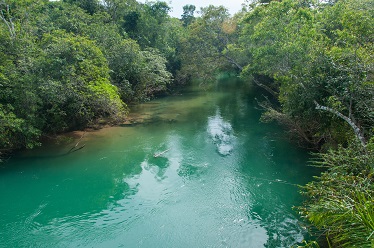Local communities and scientists join forces for conservation

Related topics
Environment & climate action Innovation Austria Netherlands Spain United Kingdom Environment Mexico Bolivia, Plurinational State of Brazildate: 01/12/2015
Project: Assessing the effectiveness of community...
acronym: COMBIOSERVE
See also: CORDIS
Brazil, Bolivia and Mexico were the destinations for the COMBIOSERVE project researchers in their quest to identify the ingredients needed for successful community-based conservation initiatives in bioculturally diverse locations. Each location had schemes in place, involving a wide range of communities: hunter-gatherer societies in Bolivia, agriculture-based groups in Mexico and indigenous communities in Brazil.
There is a school of thought that says cultural diversity has a positive influence on biodiversity and even creates it, which is why the two are often found in the same place, explains COMBIOSERVE project manager Christoph Schunko of Austria’s University of Natural Resources and Life Sciences. Conservation should therefore tackle both together.
“The theory behind this is that when biological diversity is fostered by cultural diversity, they are mutually dependent and thus have to be conserved together for effective conservation,” he says.
So in protecting biodiversity, this approach rejects the “fines and fences approach to conservation, where local people are expelled from regions to be conserved”, he adds.
Putting heads together
Collaboration between civil society organisations, researchers and local communities was at the heart of the EU-funded project. For some parts of the research, a ‘cooperative enquiry’ or ‘co-enquiry’ approach was used. This gives equal weighting to all three groups in decisions on which topics to study, with which methodology, on conducting the research itself and then analysing the results.
For other areas, the team used more conventional research methods – such as scenario-building, structured interviews and focus groups – to gain socio-economic insights from the communities.
Certain methods were more successful than others, providing valuable lessons that fed into the project’s recommendations on biocultural conservation schemes.
The recommendations can be found in COMBIOSERVE’s various manuals. The guidelines on co-enquiry “can and should be applied in other regions”, according to Schunko. They explain specific tools for co-enquiry research processes, particularly in relation to community-based territorial management. They also describes the team’s field experiences, provide co-enquiry monitoring and evaluation tools and set out the various methodologies developed to address the research questions on community conservation tackled by COMBIOSERVE.
Taking time
While the importance and value of researchers and civil society organisations working together was never in doubt during COMBIOSERVE, the partnership encountered some teething problems.
Civil society organisations (CSOs) were disadvantaged from the start because they were less experienced in the processes involved in proposing projects and then implementing them, particularly the financial and administrative requirements.
Schunko does however note that the CSOs became more confident as the project went on. The key requirement is time, he says – time to get to know the partners, local conditions and requirements.
“I believe that doing research with local CSOs and local communities is very important. However, we should not underestimate the time needed to create mutual understanding, set up useful research strategies, implement the research together, analyse the data and bring the results to fruition. I have to acknowledge that a three-year project can only be the start of a much longer process,” says Schunko.
Within this three-year period, the project did however manage to publish numerous guidance documents in addition to the co-enquiry manual. Policy briefs, scientific publications and manuals on participatory mapping and community biodiversity assessments are among the project’s publications.
The project ended in January 2015, but both local CSOs and local research institutions plan to continue the cooperation on preserving biocultural diversity. The project was also the launch pad for other project ideas – Schunko’s university and a Mexican CSO partner from the project are currently looking into funding options for a project on organic agriculture, which emerged as a “hot topic” during COMBIOSERVE.
